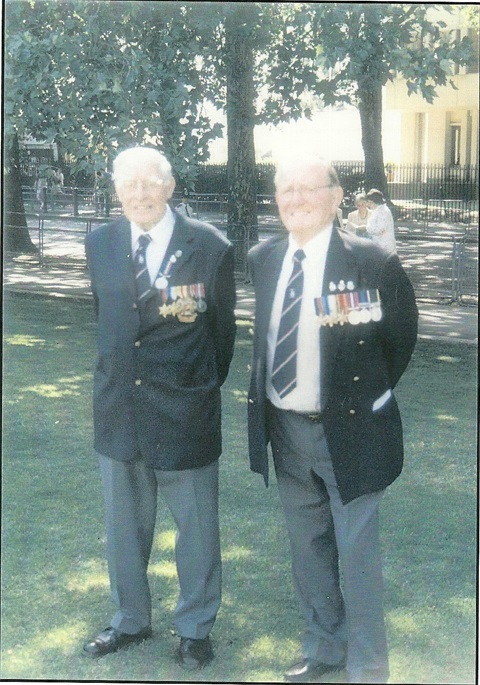Posting headline
When anyone asks me how I can best describe my experience of nearly forty years at sea,
I merely say uneventful.
Of course there have been winter gales
and storms and fog and the like, but in all my experience, I have never been in an accident of any sort worth speaking about.
I have seen but one vessel in distress in all my years at sea ....
I never saw a wreck and have never been wrecked, nor
was I in any predicament that threatened to end in disaster of any sort.
Extract from a presentation by CAPTAIN E.J.SMITH - 1907.
On April 14th 1912 the R.M.S.TITANIC sank with the loss of 1,500 lives ... one of which was the Master
CAPTAIN E.J.SMITH.
OLLY & JOLIE
OLIVIA
Olly is a special girl - the middle one of three,
She is blonde and beautiful and it seems to me,
That she has found a pet rat - Roland is his name,
But she has to watch him when he plays his little game,
Co’s
Olly doesn’t like it much, and it makes her a little mad,
When he hides behind the fireplace and is really very bad,
Because Roland’s nice and cuddly and a lovely shade of pink,
He may come down the chimney with his coat as black
as ink,
So Olly then must wash him, and put him in the bath,
Then hang him out with clothes pegs above the garden path,
But if she scrubs him too much he will have a mighty fright,
The reflection in the mirror - will show he’s gone
all white,
O`Dear !
JOLIE
Jolie is a pretty girl - the youngest one of three,
She sometimes goes to Hillside school then wanders home for tea,
Jolie`s five years old now and has a go at tap,
And a kind of ballet dance
that wakes dad from a nap,
She loves her little dollies and shoves them in her pram,
Then she pretends to feed `em with some bread and jam,
When mum goes out to see a friend, Jolies in the car
And she brings her pram along - to walk is
far too far.
She rarely has her boots on when playing round the house,
And she falls asleep so quickly - snoring like a mouse.
But we love our darling Jolie - the youngest one of three,
Especially when she cuddles up, and has a chat with
me.
Happy Birthday - Granddad 10.7.99
A Brief History Of The Only Rum Worth Drinking
A Brief History Of The Only Rum Worth Drinking
On the 31st July 1970. The Royal Navy ceased to issue the daily tot of rum to their sailors. This day was dubbed “Black Tot Day” Rum had been served to ratings in the Royal Navy and Royal Marines serving in H.M. Ships and Establishments since 1665. It was indeed a “Black Day”.
The origins of rum are shrouded in mystery. We do know that Christopher Columbus introduced sugar cane into the Caribbean over five hundred years ago. We do not know either where the name “Rum” came from, although it is thought it may derive from an old Devon word “Rumbullion”.
The daily amount of rum issued in the ships of the Royal Navy, was determined by the individual Commanders in chief up until 1731. There was no accurate method of determining the strength of the rum either, so the effects on the sailors must have been variable also. In 1816 the “Sikes Hydrometer” was invented and used to measure the strength of all spirits with accuracy. But prior to this the strength of rum had been determined by mixing a few grains of black gunpowder with the rum, so that when the sun through a magnifying glass heated the mixture, it ignited. This was then designated the correct strength. (95.5 degrees proof (54.5% ABV), which is still the strength of “Pusser’s Rum” blue label to this day).
The first regulated measure of half a pint per man per day was usually drunk neat. This resulted, as one can imagine, in a great deal of drunkenness amongst the crews. So it was that in 1740 Vice Admiral Vernon, Commander-in- Chief of His Majesty’s fleet in the West Indies, ordered that the rum be mixed in the proportion of a quart of water to every half pint of rum. This was the mixture that became known as “grog” from the Admirals nickname of “Old Grogram”, derived from his habit of wearing a coarse grogram cloth boat cloak. The rum was served twice a day by the ship’s purser from a rum tub made from a “scuttled butt”, a barrel cut in two.
“Purser” subsequently became corrupted to “Pusser” and of course that name is still in use in the Royal Navy to this day. In 1824 tea was introduced into naval rations while at this time the proportion of rum in grog had been halved to one gill (quarter pint) per day.
In 1850 a further attempt to reduce drunkenness was introduced, when the tot was reduced to half a gill, with compensating pay for an extra tea ration. This remained the official amount until 1970.
In 1979, Charles Tobias who as a boy in Canada remembered an uncle serving in the Royal Canadian Navy bringing home an illicit bottle of Pusser’s rum, negotiated with the Admiralty Board and obtained the approval for the re-blending of Pusser’s Rum to their original specification. He acquired the formula for the authentic Navy blend, which had never been previously available to the public. This was launched onto the market in 1980. Charles Tobias insisted that $2 per case sold worldwide would go as a royalty to the Royal Navy’s tot fund in perpetuity. So if you want to help your comrades in the Royal Navy/Royal Marines, insist on drinking only “Pusser’s Rum, after all it is the only rum worth drinking and is the official rum of the Royal Naval Association.


Latest comments
Thanks Jacqui - I have sent away for your book - `an looking forward to reading it - Cheers Joe x
I've started reading your book, Joe. It's made me smile, laugh and understand. My father and grandfather, merchant seamen of their time, are long gone but they would have loved your book.
Nice photo guys
I regret I cannot remember that particular name - sorry - cheers Joe